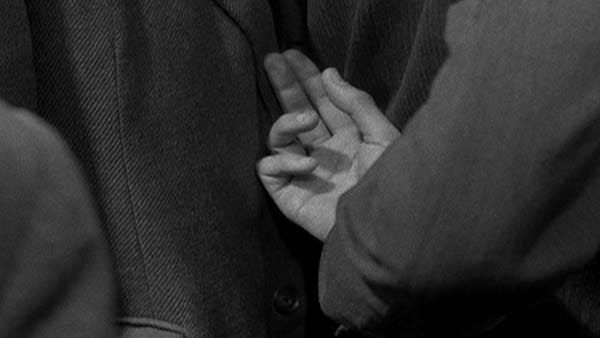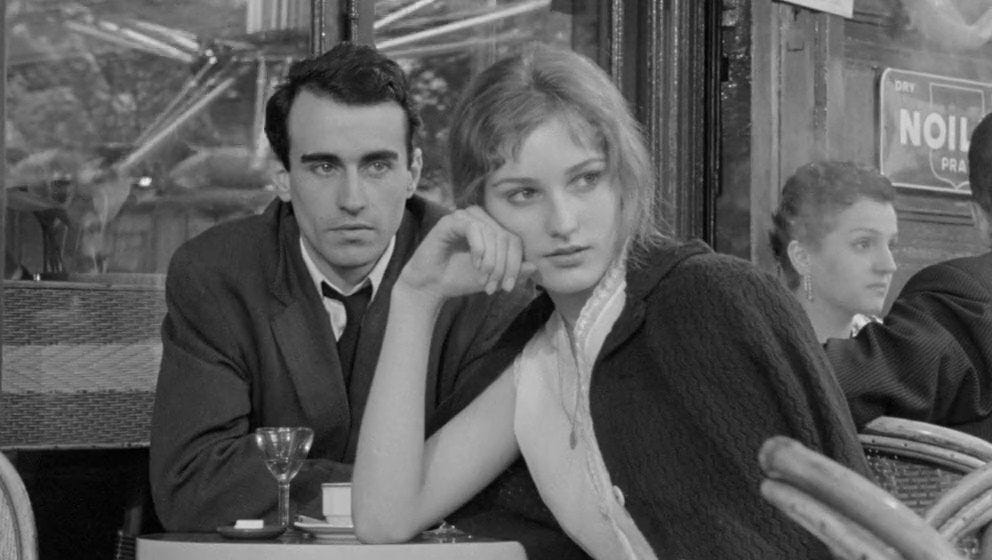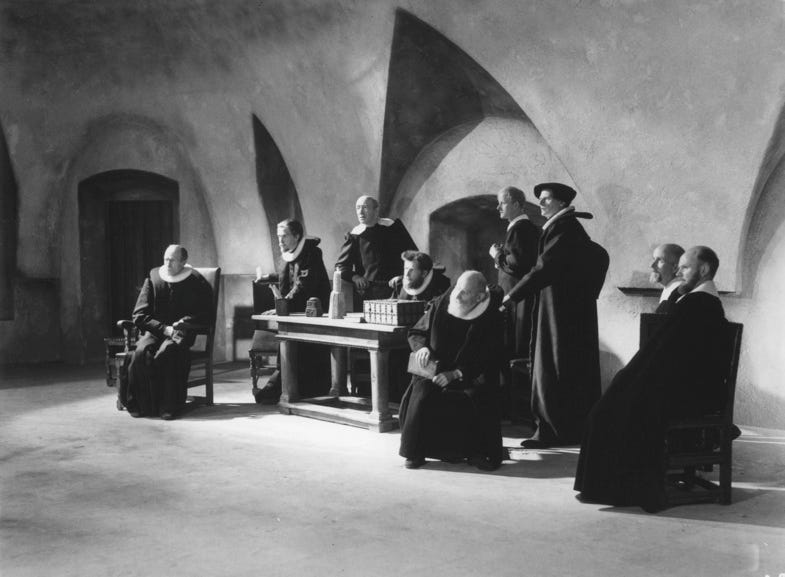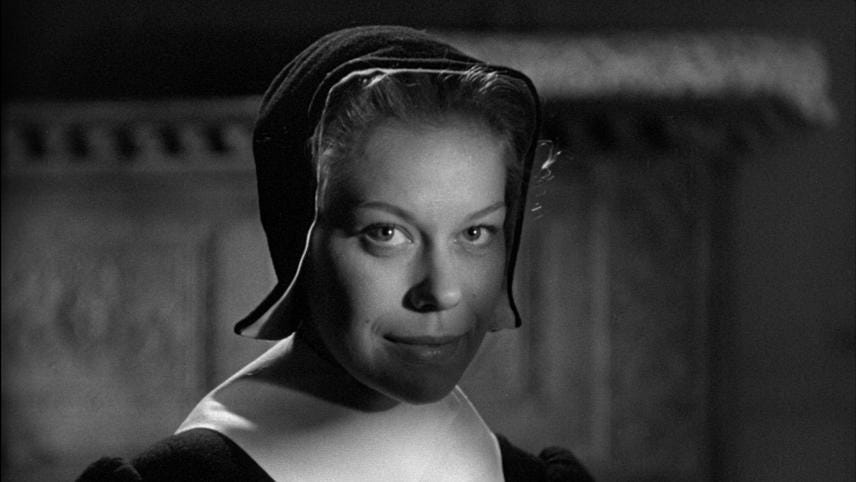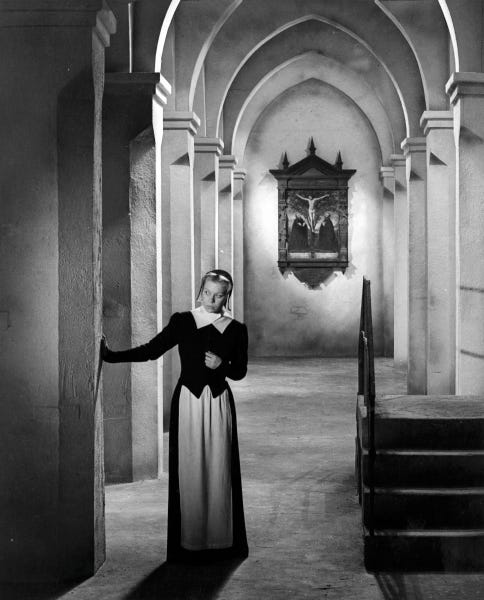🎬 #32 Bresson and Dreyer's Minimal Masterpieces.
Filmmaking is a complicated business. From discovering an idea, to making that idea actually work as a script, to formulating a vision on how the script should be articulated in a series of images and snippets of sound, to then actually capturing that vision. All the while, dealing with the realities of physical production as you try to make the film you set out to make with a team of 10’s if not hundreds of people.
It’s not surprising that Kubrick compared it to writing War and Peace while in a bumper car in an amusement park.
The two films this week are made by filmmakers that somehow make it look simple. Their minimal approach to aesthetics, from camera moves to set design, and even performance means they craft films that pack emotion into something so slight it feels impossibly easy.
FILM ONE: PICKPOCKET
1959 Dir Robert Bresson
Robert Bresson is one of my favourite filmmakers. Not necessarily because I love his films more than another directors but more because I love his approach to making them. His monastic, ascetic sensibility appears across his entire filmography. He’s the filmmaking equivalent to say an architect like John Pawson. Unadorned, unfussy storytelling at its finest - nothing used other than what is necessary to produce the desired feeling in the audience. So his pictures come across as sparce, with little score, but that just heightens and focuses the storytelling.
He made just 13 films over the span of 50 years, compare that to say Ridley Scott who seems to be able to smash them out with alarming frequency even into his late 70’s. That’s not to say one’s methods are superior to the other. Bresson was vehemently anti-studio, anti-commercial, he took his time finding his stories and the struggles with funding probably didn’t help the extended timeline per project.
Why did I like it, for all the reasons I like Bresson. The emptiness, the focus, the unfussy-ness of it. There is a sleight of hand slickness to the film, the close-ups on Michel’s hands as he manoeuvres them into stranger’s bags and pockets, the sense of imprisonment from the simple camera blocking, placing people in and around Michel. Pickpocket is a character study - we’re on the heels of Michel - a pickpocket living in Paris who has a sick mother and is falling in love with her young neighbour who looks after her.
It’s a master lesson in how so much story can be conveyed with so little, so simply. And just because its minimal, doesn’t mean a film can’t deliver maximum impact. Much like a minimal space, free of the unnecessary and the clutter, it gives space to the audience and lets feeling and emotion come become more vivid.
TL;DR why should I spend 1 hr 16 mins of my precious life watching this? Experience the filmic equivalent of a sparse meditation retreat, as we follow the trials and tribulations of Michel, as he expresses himself through his art of pick pocketing.
*Available for a small rental fee on Amazon and Apple.
Fact: One of Paul Schrader’s favourite films and you can see its imprint on Schrader’s greatest script - Taxi Driver.
FILM TWO: DAY OF WRATH
1943 Dir Carl Theodor Dreyer
Look at that image - visually and in some ways literally monastic. Like Bresson, Dreyer has a particular talent of telling stories that inspire almost spiritual levels of awe, but in an incredibly and sometimes shockingly pared back way.
This signature is etched across his filmography. That and his fascination with faith, the implications of the supernatural in reality, mysticism, and how, as humans, we relate to the darker forces that go unseen. And it’s the same here with Days of Wrath. A story that see’s an ageing priest’s young wife fall in love with his son - all set against the backdrop of a witch hunt in 17th Century Denmark.
There is a stark, brooding sense of suspicion that permeates the film. Perfect for a story that’s largely about who people really are. From the perspective of the son meeting his farther’s new wife for the first time, who is she really, are her feelings for his father genuine? And is the ‘witch’ the town are looking for really a witch?
Hidden realities and veiled intentions, are thematically expressed again in a minimalistic, painterly, even theatrical way. Strong shadows, silhouettes, high contrast sets and costumes, even mist tell us this is a story about the shrouded half truth of who we really are as people. Visually it’s like Casper David Friedrich but with the graphic realist flair of a John Register painting.
Dreyer’s ability to conjure up films dense with atmosphere and emotion, with the through line of a startlingly, apparently simple plot always amazes me. I became an instant fan after seeing The Passion of Joan of Arc and his preoccupation with the human struggles [and consequences] of trying to live up to some inhuman, otherworldly expectations of faith is still on veiled display here.
TL;DR why should I spend 1 hr 37 mins of my precious life watching this? Dreyer’s atmospheric witchhunt/ love story is beguiling in his ascetic filmmaking hands.
*Available to stream on The Criterion Channel
Fact: Dreyer worked as a journalist during the 11 year gap between this and his previous film, Vampyr.



